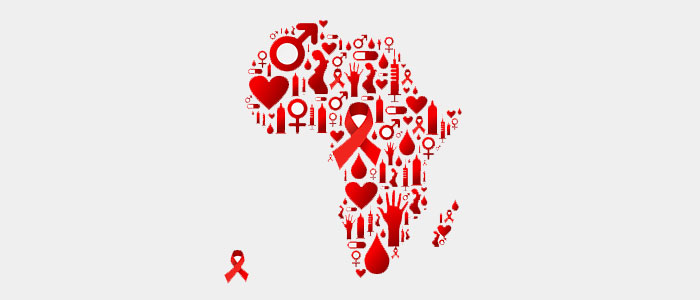Despite all the progress made against AIDS across the continent of Africa, it remains more heavily burdened by the disease than anywhere else in the world. Africa is home to nearly 26 million people living with HIV. Of the 600 children born with HIV every day, more than a quarter of them will be born in Nigeria alone, and in South Africa, over 800 girls are infected with HIV every week. Eighty per cent of HIV-positive people live in just 20 countries, 13 of which are in sub-Saharan Africa. The impact and the toll of the disease is immense. Yet at the same time, African countries and citizens are already playing critical roles in the fight against AIDS—and together, they must step up even more to help bend its curve.
In order to control the HIV/AIDS epidemic, UNAIDS estimates that low- and middle-income countries will require nearly $32bn annually by 2020—nearly $12 billion short of 2014 AIDS spending levels. While one might assume this gap will only be plugged by leading donor countries, much of this total could and should come from African governments’ own national budgets—many of which are growing rapidly.
Today, countries across Africa generate more than $520bn in domestic revenue, which is an astonishing 8.5 times the amount the continent receives in aid. And as part of the 2001 Abuja commitment, every single country in Africa agreed to spend 15% or more on their health programmes. However, in 2013 only six sub-Saharan African countries had met this target: Rwanda, Swaziland, Ethiopia, Malawi, the Central African Republic and Togo. Ten others even decreased spending. By not meeting their commitment, 40 sub-Saharan African countries missed out on a cumulative $19.2bn in potential health investments in 2013. Nigeria, as one of the more extreme examples, would have dedicated $7.31bn more to health in 2013 if it had spent 15% of its budget on the sector.
This spending deficit could become a golden opportunity. ONE’s World AIDS Day report, Unfinished Business: Tracking Global Commitments on AIDS, has calculated that if each country that is not currently meeting the Abuja target were to spend just 1% extra on their health budgets, and then 20% of this on AIDS programmes, this would mobilise $740m in additional resources. Theoretically, this could pay for more than 7 million lives saved through antiretroviral medication. Imagine the unbelievable progress the world could make against killer, preventable diseases—and the message of self-sufficiency it would send to citizens—if each country eventually reached their 15% commitment.
Of course, we cannot entirely minimise the importance of external partnerships or the impact donor countries have had and will continue to make in the fight against AIDS. The Global Fund to Fight AIDS, TB, and Malaria alone is on track to save to save 22 million lives by 2016, with grants and partnerships reaching 140 countries. And together, donors contributed more than $8.6bn to AIDS programmes in 2014—no small sum. But make no mistake: the fight against AIDS will not be won solely on the backs of these donors.
This World AIDS Day, we stand at a unique window of opportunity to change the course of the epidemic and send it on a path towards its ultimate defeat by 2030. To finance the fight it will take the combined efforts of donor governments, the private sector, innovative financing mechanisms and African national budgets. If these combined efforts can be “fast-tracked” and come together with urgency within the next five years, we could see 21 million lives saved and 28 million HIV infections averted. More than anything, it will be African national budgets that pave the way to 2030. If we’re going to win this fight, Africa must lead it.














